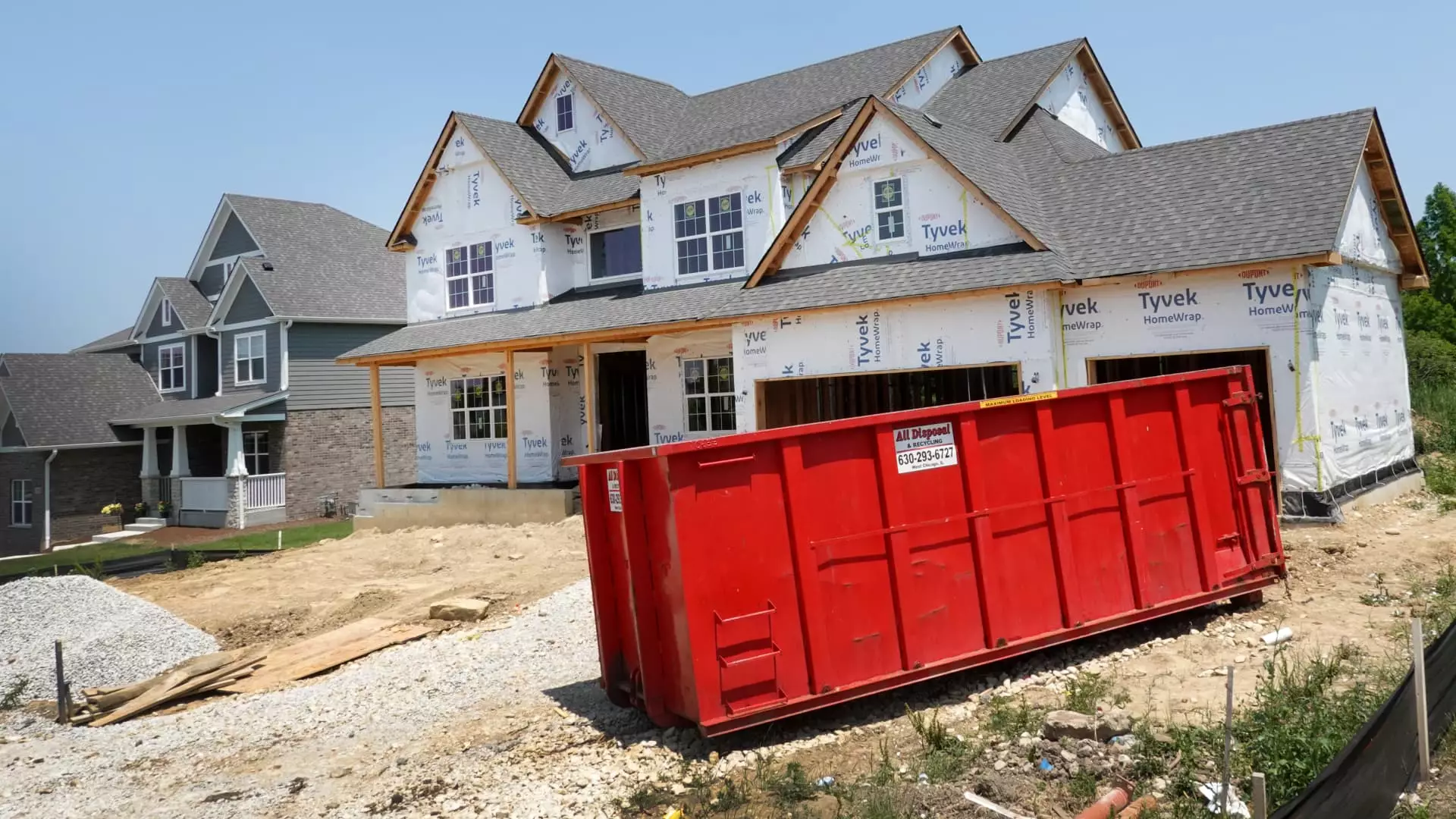The leap from the campaign trail to the Oval Office was supposed to mark a new dawn for American infrastructure and housing. However, President Donald Trump’s administration has, ironically, imposed its own set of barriers that harms what it purported to uplift. A report from the National Association of Home Builders (NAHB) reveals an alarming projection: tariffs could inflate the cost of building a new home by a staggering $10,000. This figure isn’t just a statistic; it’s a tangible menace that threatens middle-class aspirations of homeownership, compounding existing economic disparities.
When we hear $10,000, it might sound like just another number tossed around in the political sphere, but it carries weight. This amount could serve as a decisive barrier, pushing homeownership beyond the reach of families striving to make that crucial investment in their future. The NAHB’s warnings echo a grim sentiment; tariffs are functioning as a silent tax, eroding the financial fabric that underpins the American dream of homeownership.
Tariffs: A Double-Edged Sword
Trump’s administration has focused on the noble intention of protecting American workers, but the irony is hard to ignore. The 25% tariffs on imports from Canada and Mexico don’t just target foreign manufacturers; they aim their arrows squarely at American consumers. Softwood lumber prices, essential for homebuilding, will skyrocket, along with materials like drywall and appliances—all crucial components of a home.
The immediate backlash observed in the SPDR S&P Homebuilders ETF, which saw a drop of over 22% since late November, suggests that investors are not buying into a feigned sense of stability. The uncertainty surrounding these tariffs is a dark cloud looming over a market that already grapples with rising interest rates and limited inventory. D.R. Horton, one of the nation’s largest homebuilders, finds itself navigating treacherous waters; roughly 20% of its lumber comes from Canada. They, like many others, must strategize to protect their profit margins while living under the specter of future costs.
The Ripple Effect on Local Builders
What appears to be an issue primarily for large-scale builders also reverberates through smaller, independent firms. As K.B. Home’s COO Robert McGibney reminded us, even those who predominantly source materials domestically will not escape the repercussions of these sweeping tariffs. The interconnectedness of today’s economy means that price hikes can ripple through the entire construction landscape, raising domestic materials as competitors localize their supply chains to escape the import tariffs.
Many people overlook how intertwined the economy has become; a microcosm of the housing market illuminates this reality perfectly. If demand for American-made materials rises due to artificially inflated prices on imported goods, builders, particularly those who focus on a local supply chain, find themselves trapped in a market spiral they did not create. It underscores the ludicrousness of punishing consumers in the name of protectionism.
Perspectives from the Ground
During a recent investor day held by Taylor Morrison, chief economist Ali Wolf emphasized that Trump’s tariff policies could lead to increased material costs for homebuilders—potent numbers of 6% to 14% increase were thrown around. Her insights resonate deeply as they are grounded in the realities of builders who are watching improvisation and rapid shifts become the norms of their business practice.
This unpredictability doesn’t just deter builders; it disheartens consumers. Every month that passes brings new uncertainties, as families weigh whether to purchase homes at inflated prices or to wait for a more stable market—if such a thing exists under this administration. Wolf’s comments on the potential issues tied to immigration—where mass deportations could drastically shrink the labor force—paint a troubling picture for homebuilders already strapped for skilled workers.
The juxtaposition of growing deregulation with oppressive tariffs creates a paradox of opportunity and adversity. Regulatory easing is a welcome sign for many in the homebuilding sector, but when tariffs and immigration policies intertwine, we witness a market at a crossroads.
In this volatile landscape, the building industry stands vulnerable, caught between soaring material costs and a workforce that is increasingly precarious. The promise of progress is dimmed by the stark reality of rising expenses, ultimately suffocating the very prosperity Trump’s administration claims to champion.

